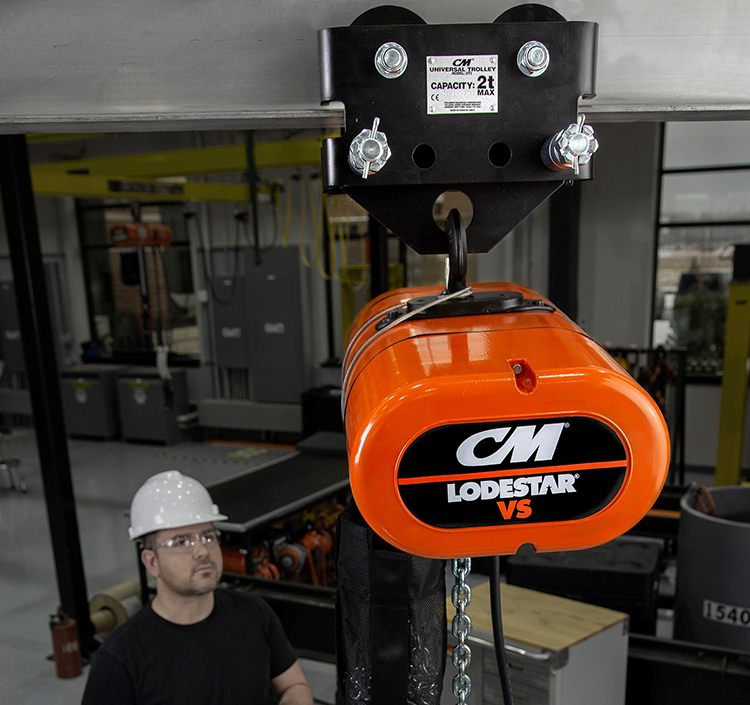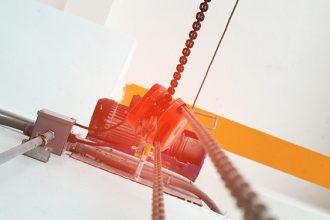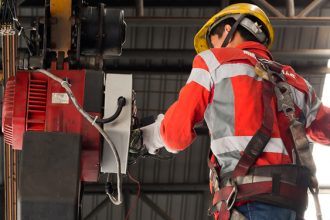Follow These Hoist Safety Guidelines To Protect Your Operation
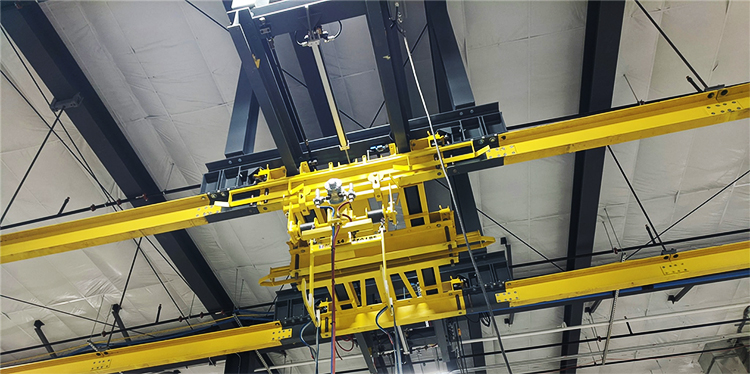
Manual, air, and electric hoists enhance an operation’s ergonomics by enabling a single operator to lift and lower freely suspended, bulky loads for positioning, transport, and placement. In addition to eliminating the strain of repetitively lifting heavy objects manually, hoists also increase handling efficiency and productivity. To ensure their safest use, operations utilizing hoists have a variety of responsibilities that are critical to the safe operation of this equipment. The Hoist Manufacturers Institute (HMI) publishes multiple specifications and recommended practices for hoist design, operation and service. Follow these hoist safety guidelines to protect your operation, enhance equipment integrity and reliability, and reduce the risk of injury.
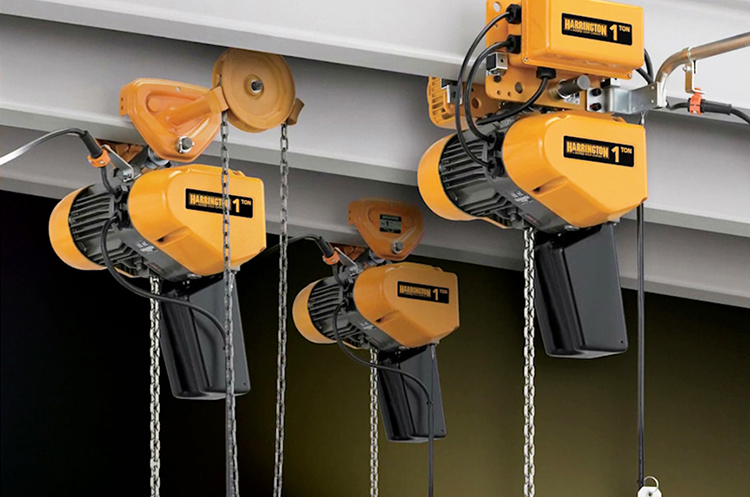
Hoist Safety Best Practices
Select the Properly Sized Hoist for an Application
Supplied separately from an overhead crane, monorail, or workstation crane, hoists can be easily exchanged among different types of overhead lifting systems. Regardless of the overhead lifting equipment used, it is critical to ensure that both it and the hoist are properly sized to handle the load. When specifying and purchasing the equipment, select a hoist that is sufficient (or slightly more so) for the lifting speed, weight capacity, and duty service of the handling application. This ensures that the lifting device is sized correctly for the load and will perform as expected.
Read the Owner’s Manual
Developed by the hoist’s manufacturer and provided upon installtion, these documents contain critical information. They detail specifications, dimensions, operation instructions, inspection criteria, parts lists, and other key hoist safety guidelines.
Follow OSHA Guidelines
The Occupational Safety and Health Administration (OSHA) requires facility operators to provide their employees with equipment that is both safe and operates property. This includes hoists and any below-the-hook lifting devices — such as hooks, magnets, slings, grippers, beams, or vacuum cups — used with them.
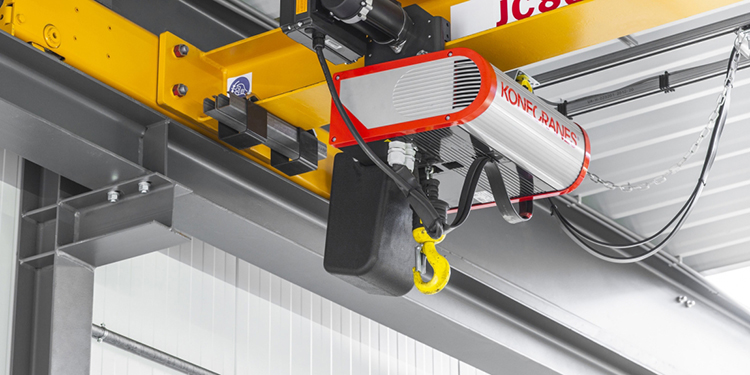
Conduct Regular Inspections
Prior to the start of each shift, inspect the hoist by following HMI’s pre-inspection checklist before operation. This resource covers multiple areas, including the operating mechanism, limit devices, hooks, latches, and lifting media (chain, rope or strap). More detailed inspections should also occur at frequent and periodic intervals. Additionally, hoists used outdoors, in harsh environments, and/or with a higher duty cycle require frequent and periodic inspections to be performed more often. Damage, malfunctions, or unusual performance noted by an operator should be reported to managers, and the hoist removed from service immediately. Further, never allow operators to use a hoist with a twisted, kinked, damaged, or worn wire rope or chain.
Only Lift Loads Centered Under the Hoist
Loads should be directly underneath the hoist prior to operating the hoist. Never allow an operator to attempt a side-pull to reach a load. Pulling the hoist and its chain or wire at an angle and out of plumb from under the trolley and overhead lifting equipment is dangerous.
Train Personnel in Proper Hoist Operation
Only those employees who complete training on the proper use of the overhead hoist and associated equipment should be allowed to use it. All hoist operators should know, understand, and follow hoist operation guidelines to ensure worker and facility safety. Training should be provided by someone with experience on the equipment. Verify that hoist operators are familiar with the following steps before allowing them to use the equipment:
- Always maintain a firm footing when operating the hoist.
- Tension the hoist prior to each lift operation to check brake function.
- Confirm that the hoist’s limit switches function properly before lifting a load.
- Carefully take up slack, confirming that the load’s balance, stability, and load holding action are secure before proceeding.
- Under slack conditions, use hook latches to retain slings or chains. Before operating the hoist, confirm that hook latches are closed and not supporting any parts of the load.
- Avoid swinging the load or hook.
- Verify that the hook travels in the same direction as shown on the controls.
- Alert personnel in surrounding areas of an approaching load.
Perform Regular Preventive Maintenance
To ensure hoist safety and long service life, perform regular preventive maintenance as specified by the manufacturer. This includes consistent lubrication and replacement of damaged or worn parts. Keep appropriate records of all hoist maintenance activities. If it is necessary to outsource preventive maintenance and repairs, engage independent crane service professionals with experience on the specific equipment.
Follow the Hoist Manufacturer’s Safety Recommendations
Require all hoist operators to follow manufacturer specified safety precautions when operating the equipment. This includes:
- Not attempting to operate a hoist that bearing an out-of-service tag, or with missing or illegible safety placards or decals.
- Not permitting an operator to attach a load to a hoist without first having proper training.
- Never trying to lift a load that exceeds the capacity rating of the hoist.
- Not using the hoist load limiting or warning device as a means to measure the load.
- Only using limit switches as emergency devices, not routine operating stops.
- Only applying a load if the chain is properly seated in the wheels or sprockets, or if the wire rope is properly seated in the grooves.
- Never lift or move loads over people. Never use the hoist to lift, support, or transport people.
- Only apply the load once all supporting chains, ropes, or web straps are loaded equally.
Need More Information on Hoists?
In addition to these hoist safety guidelines, the members of the Hoist Manufacturers Institute (HMI) offer a variety of resources. These include a comprehensive library of product guides; a hoist certification program; OSHA Alliance safety tip sheets, fact sheets and quick cards; multiple technical papers and more. All are available via HMI’s website at www.MHI.org/hmi.


